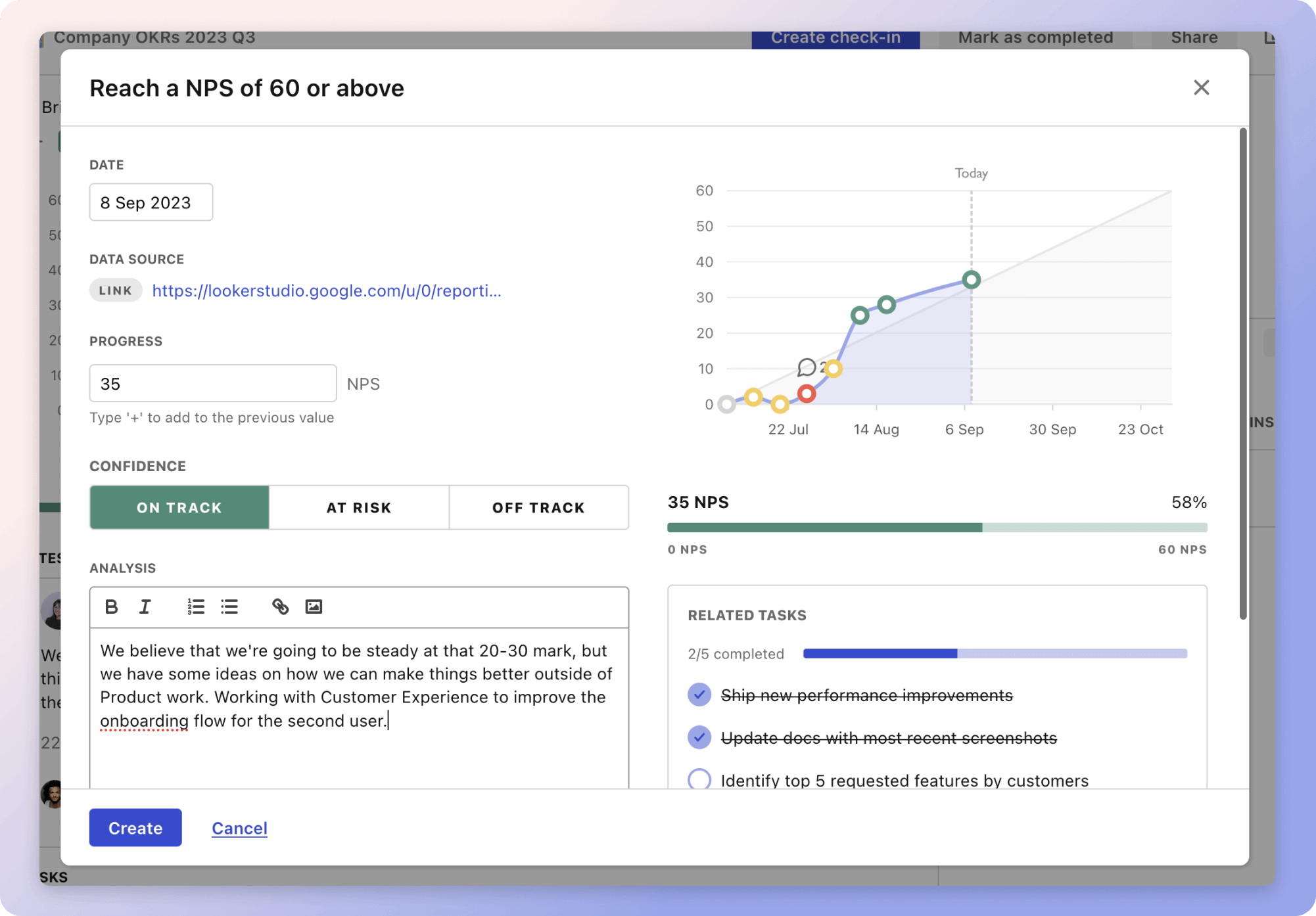What are Workplace Safety metrics?
Finding the right Workplace Safety metrics can be daunting, especially when you're busy working on your day-to-day tasks. This is why we've curated a list of examples for your inspiration.
Copy these examples into your preferred tool, or adopt Tability to ensure you remain accountable.
Find Workplace Safety metrics with AI
While we have some examples available, it's likely that you'll have specific scenarios that aren't covered here. You can use our free AI metrics generator below to generate your own strategies.
Examples of Workplace Safety metrics and KPIs
Metrics for Safety and Compliance Management
Tracking your Workplace Safety metrics
Having a plan is one thing, sticking to it is another.
Having a good strategy is only half the effort. You'll increase significantly your chances of success if you commit to a weekly check-in process.
A tool like Tability can also help you by combining AI and goal-setting to keep you on track.
 Tability's check-ins will save you hours and increase transparency
Tability's check-ins will save you hours and increase transparencyMore metrics recently published
We have more examples to help you below.
The best metrics for Team Leader Performance
The best metrics for Backend Code Quality
The best metrics for Threat and Incident Analysis
The best metrics for Security Alert Management
The best metrics for Growing Inflight Catering
The best metrics for Infrastructure Performance
Planning resources
OKRs are a great way to translate strategies into measurable goals. Here are a list of resources to help you adopt the OKR framework:
- To learn: What are OKRs? The complete 2024 guide
- Blog posts: ODT Blog
- Success metrics: KPIs examples